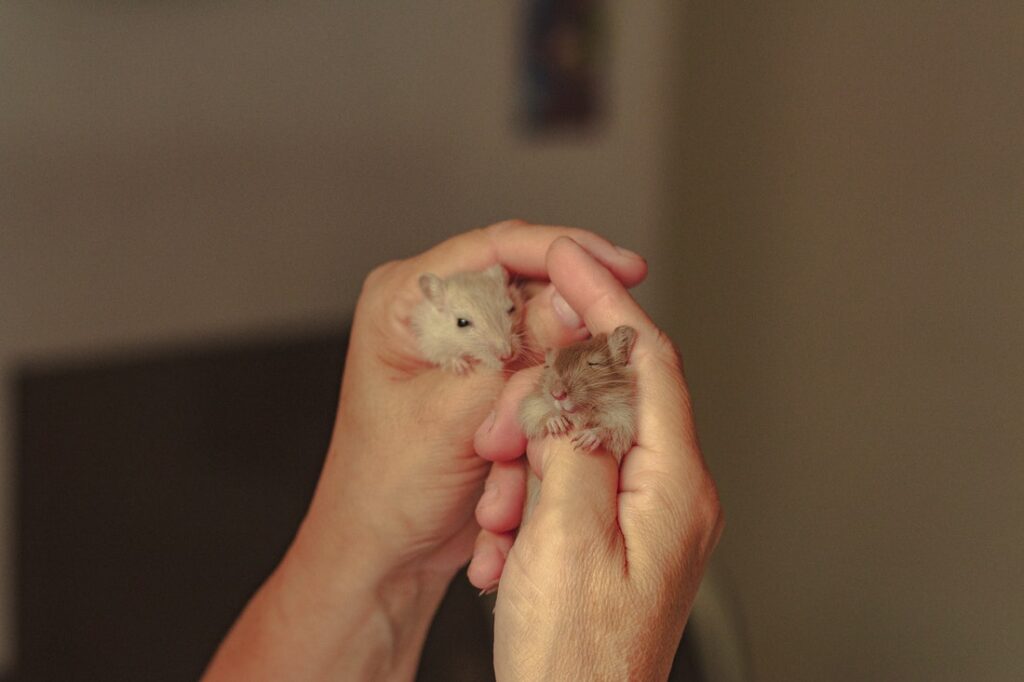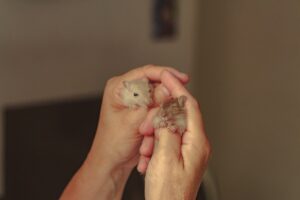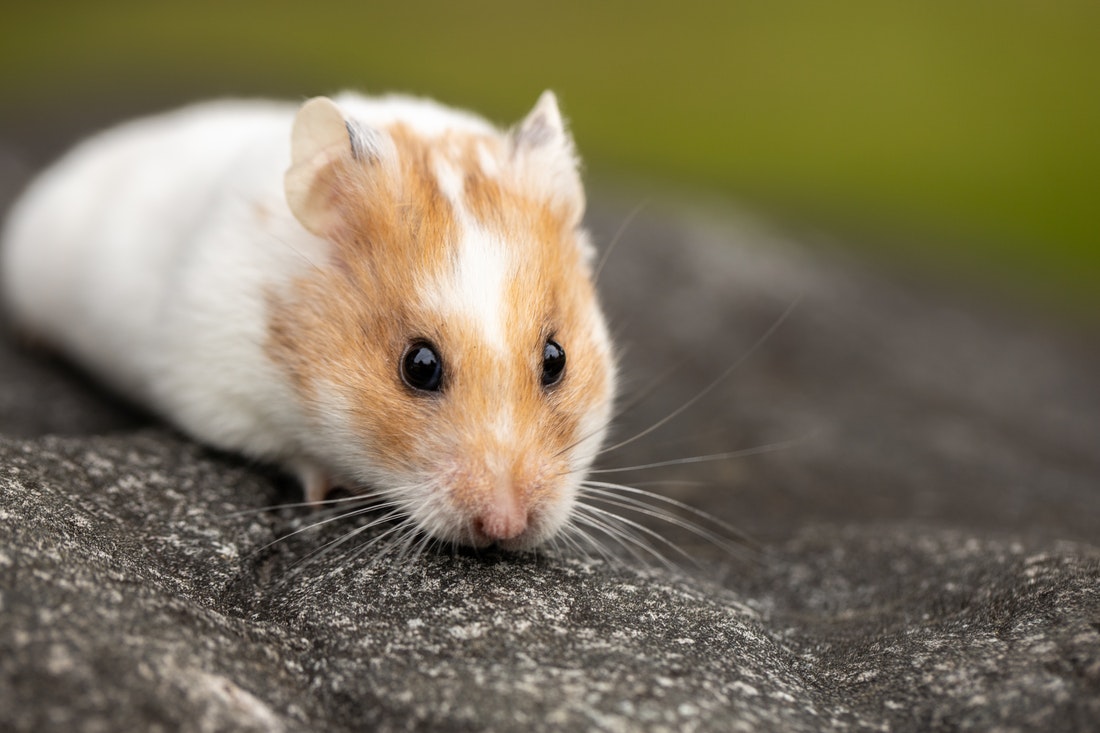Have you ever seen something cutest than a hamster grooming itself? Indeed, these tiny pets look amazing while using their front paws to lick and comb behind the ears. Naturally, hamsters are very tidy animals, and they are the great first pets.
However, you still need to take care of hamster grooming needs to keep them happy and healthy.
Mostly, newbies have no idea about hamster grooming requirements. If you want to make a hamster your pet, this post is for you. Read it and discover all about hamster grooming to ensure the healthiest life for your pet.
Do Hamsters Need Grooming?
You might be wondering if a hamster actually needs grooming or not. Hamsters resemble cats in the habit of keeping themselves clean. This grooming is sufficient to keep them looking clean and smelling fresh.
Therefore, hamsters don’t need grooming like pet cats and dogs. Even you don’t need to clean or wash them too often because water can remove essential oils from your hamster’s coat. In addition, your little friend can get cold if it takes a water bath.
Sometimes, the bedding in the cage sticks to the hamster’s bottom and makes them look messy. Often, your little friend fails to clean some spots on its body. In this case, you can gently perform occasional spot cleaning with a pet-friendly wipe or a cloth damped with lukewarm water.
Are Hamsters Happy When Grooming?
Many pet parents feel worried about are hamsters happy when grooming themselves. Generally, hamsters groom a lot when they feel comfortable, safe, and contended. Grooming is a sign of a happy hamster.
Contrarily, overgrooming might also be a sign of a nervous and anxious hamster. It mostly happens when young hamsters get used to being handled outside the cage. They also groom themselves disturbingly when something upsets them in the cage. Besides excessive grooming, an unhappy hamster constantly tries to escape and bites its cage.
If your hamster is not self-grooming, it might be sick or have a sprained paw. Plus, aged hamsters lack energy for self-grooming. In this case, take your tiny pet to the vet for treatment.
Hamster Grooming Requirements

Hamsters are tiny cute animals that don’t need much grooming like other pets. They spend most of their time grooming themselves, and this grooming is enough to keep them looking clean and fresh.
You might wonder why hamsters are too conscious about their self-hygiene. In fact, hamsters instinctively keep predators at bay by maintaining self-hygiene. They know that their scent will draw predators like cats, owls, and snakes to hunt for them.
As a new pet parent, you should know how to clean your hamster properly since the cleaning requirements of long-haired and hairless hamster breeds slightly differ.
Below are some hamster grooming requirements. Let’s have a look to learn more.
Nail trimming
Hamsters don’t need nail trimming like cats and dogs. Often, these tiny pets scratch themselves while grooming. Sometimes curled nails also cause problems for these animals. In both of these cases, you should consult a vet and don’t try to trim its nails by yourself.
Coat Care
Hamster skin has natural oils that prevent dryness and keep the coat healthy. You should not wash your hamster since water can remove the oils and leads to dryness in your pet’s body.
Hairless hamsters need a few drops of unscented baby oil or coconut oil to maintain a healthy coat and prevent dryness.
Some hamsters have long hairs near the tail. These hairs often get messy when dragged while pooping. Too long hair in this area can tangle with things in the cage. Therefore, cut these hairs short and be careful not to cut your pet’s tail.
Combing
Hamsters don’t need regular combing. Food particles, dirt, and wood shavings often get stuck in the coat of the long-haired breed. You can use a soft toothbrush to clean this debris from your hamster’s fur weekly.
Oral care
Hamsters’ teeth keep growing since they take a lot of work with their teeth while eating. In the wild, the teeth of these tiny animals wear down themselves because they are used to eating all hard and soft stuff.
However, a hamster eats its specific feed while in captivity, and its teeth don’t wear out quickly. Consequently, overgrown teeth can get chipped or broken. If this happens to your pet, consult your vet as soon as possible. Also, provide them toys and sticks to chew on and keep the teeth in shape.
How Often Should Hamsters Groom?
You should not groom your hamster regularly. If you notice dirt, food particles, and debris stuck in your hamster’s coat, use an animal comb or a soft toothbrush to comb its coat once a week.
You can also use a cloth damped with lukewarm water for occasional cleaning. However, you should not interfere with your pet’s natural grooming process. You should only help your hamster clean the areas away from its reach.
Can You Give Hamster A Bath?
 You can’t give a bath to your hamster because these tiny creatures can get cold. Plus, water can dry the coat and remove the essential oils naturally present in its skin. These oils are crucial for the hydration of the coat.
You can’t give a bath to your hamster because these tiny creatures can get cold. Plus, water can dry the coat and remove the essential oils naturally present in its skin. These oils are crucial for the hydration of the coat.
A hamster distributes this oil throughout its body while grooming. Therefore, you should avoid giving a bath to your buddy.
Instead of the water bath, hamsters can benefit from a dust bath. The dust bath removes excess oil and moisture from your pet’s fur naturally.
To help your Hamster take a dust bath, place a small dish filled with animal dust in the cage. This dust is designed specifically for smaller pet cleaning.
Your pet will clean itself and also enjoy rolling in the dust. However, ensure to remove the dish from the cage after your hamster is done.
Tips To Keep Your Hamster Clean
If you want to avoid hamster grooming, follow these tips to keep your pet clean.
- Clean your hamster’s cage at least once a month. Pick up any sticky food remains from the cage that would otherwise stick to the body of this tiny animal.
- Remove the corner of the bedding wet with poop. Replace the bedding at this corner regularly.
- Never use soap or shampoo for cleaning hamsters. Only use a cloth dipped in regular tap water if required for occasional spot cleaning.
- Provide your hamster with untreated wood chips, hay, and fruit-flavored toys for chewing. It will help to maintain the teeth size of your pet.
- If your hamster’s nails get too long, get them trimmed only with vet assistance.
- If your hamster stops self-grooming and seems unwell, immediately take it to the vet.
Final Thoughts
Hopefully, you got the right way of hamster grooming after reading this post. Hamsters can keep themselves clean better than anyone else. They don’t need to take a water bath.
Instead, they can benefit from a sand bath. A happy hamster is always busy with self-cleaning.
However, a sick hamster lacks the energy required for self-grooming. If you notice that your hamster is feeling down, seek medical help. Also, keep the cage clean to maintain a healthy living environment for your hamster.




